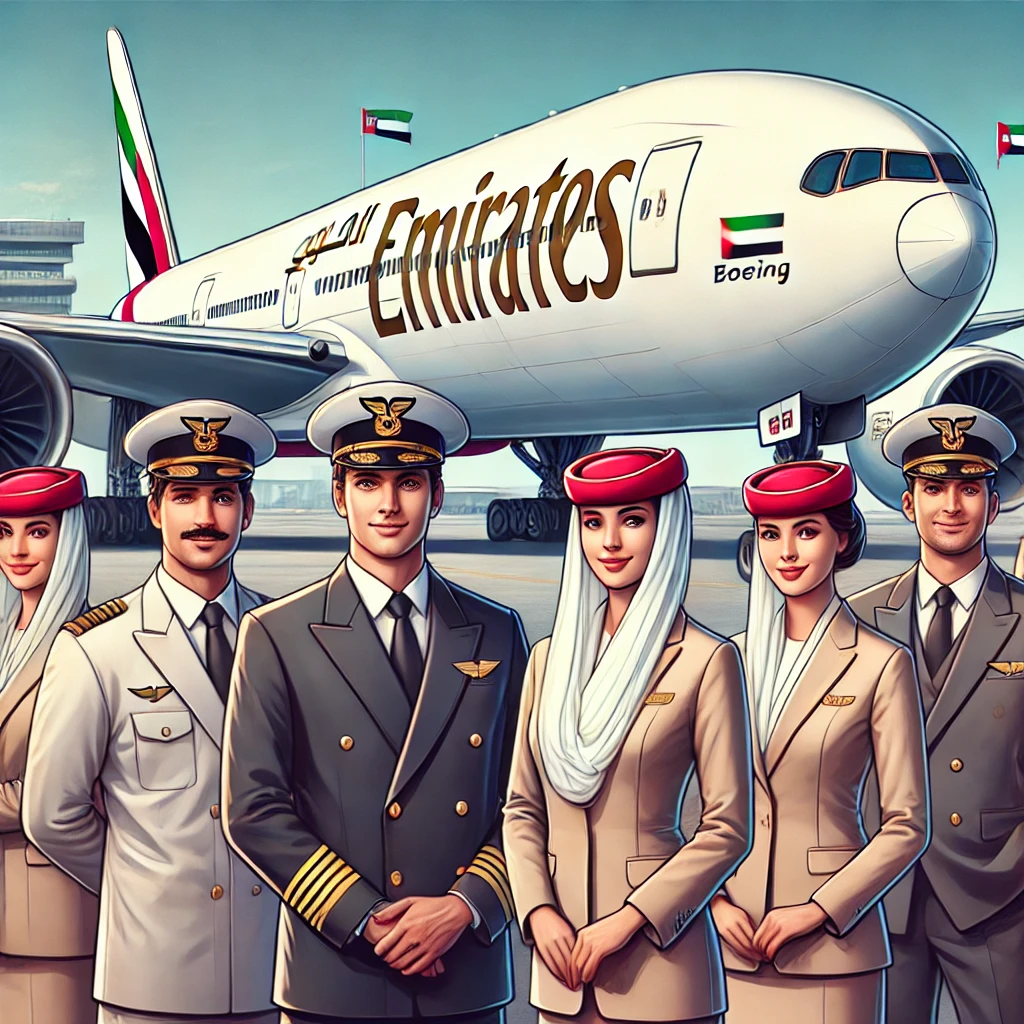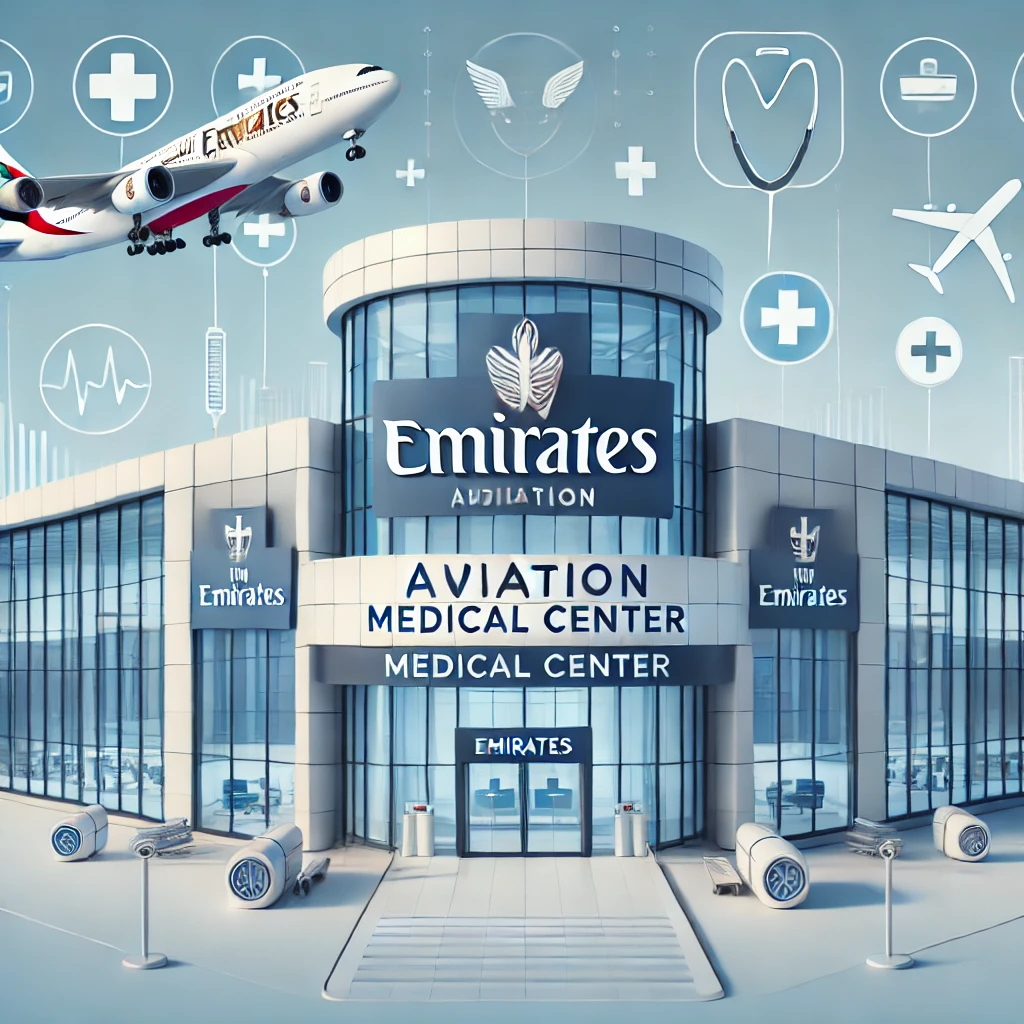Emirates is currently offering an after-tax salary of around 135,000 USD, including housing costs, at the current exchange rate.
However, it’s also the company that laid off nearly 1,000 pilots during COVID-19 (though they are now recalling them).
Although I was ultimately rejected, I progressed through nearly all stages of the selection process. I wanted to share my experiences for those who might be interested.
I’ve gained a lot of help from others’ reviews while flying for airlines, and I’d like to give back.
I’ve skipped details on salary and benefits since they are all clearly outlined on the Emirates Careers website. I focused solely on the interview process.

The sites I referenced the most were:
- Emirates Group Careers – Pilots (If you read the FAQs here, you can get an idea of the information the company provides.)
- PPRuNe – Middle East
- Airline Pilot Forums (This is like a milder version of PPRuNe but with lower post activity.)
- Latest Pilot Jobs
1. Submitting the CV/Resume
I had almost forgotten about applying when I received an email saying that my application was successful and asking me to complete a full application.
The documents I had to submit were: CV/Resume, a copy of my passport, ATPL license, and Class 1 Medical certificate.
I created a two-page resume: the first page was a cover letter, and the second was my resume. There’s no specific format for the cover letter, but if you search for “Pilot Cover Letter” on Google, you’ll find several templates you can use as a reference.
Similarly, for the resume, you can Google “Emirates Pilot Resume” to find free or paid templates.
I used a template I had created while applying to various foreign companies during college, modifying it to focus on my flight experience, educational background, flight hours, and other relevant details.
2. Hirevue Interview
I received an email asking me to complete a Digital Assessment within 7 days.
From this point onward, I began using the site Latest Pilot Jobs to prepare. You can find detailed interview materials for various airlines in the “Interview Preparation” section.
I subscribed for a month at around $40, which was enough. Not only does the site provide practice questions for every interview stage, but recent interviewees also leave helpful feedback in the comments.
I reviewed all the practice questions for each stage and read all the feedback from early 2022 when pilot recruitment resumed.
The Hirevue interview isn’t with a live person; it’s conducted through a program called Hirevue.
If you search “Emirates Hirevue Interview” on YouTube, you’ll find several examples.
You’re given a recorded question and 30 seconds to think before recording your answer while looking at the camera.
Since you only have about 1 minute to answer, it’s important to summarize your thoughts concisely in 3-4 sentences.
I found that AI analyzes the candidate’s answers, facial expressions, and gaze, then sends the results to HR.
3. Saville Assessment
Not long after the Hirevue interview, I received a link to the next assessment.
This was a simple IQ and personality test.
The IQ test involves identifying the pattern that best fits in a blank space, and you can practice similar questions on Latest Pilot Jobs.
The personality test is similar to an MBTI assessment, and you just need to answer honestly.
What was interesting was that after a few days, I received an email with my personality test results, showing how my traits compared to the average Emirates pilot.
It also mentioned that the results would influence the direction of questions in the next interview.

4. Emirates Online Panel Interview
The next step was a live online panel interview.
I received an email in mid-June asking me to schedule a date, so I chose one at the end of June. Before the interview, I was asked to submit a Flight Crew Application, which was an Excel sheet detailing my flight hours and experience.
The email included the names of the interviewers, so I searched for them on LinkedIn.
One was a British female HR specialist, and the other was an Italian male captain.
Interestingly, the captain who participated in my interview was not an A380 captain but a captain for the Emirates Airbus ACJ319 private jet.
I prepared for the interview by reviewing the feedback on Latest Pilot Jobs.
On the day of the interview, I dressed in a suit, tested my laptop webcam, and joined the call on time. The two interviewers were in different locations. Here are some of the questions I received:
Intro:
- Why did you apply to Emirates?
- What did you do to prepare for the interview?
- I mentioned reading the FAQs on the Emirates website and studying materials on Latest Pilot Jobs.
- Do you have any issues working in a different cultural environment?
Competency:
- Describe a time when you had to make a decision in a complex situation.
- Describe a time when you had to persuade a captain whose opinion differed from yours.
- Share an experience when you had to understand other people’s opinions.
- Talk about a time when you showed commitment or dedication to a company.
Outro:
- Questions I had for HR.
- They also confirmed administrative details like my notice period with my current employer, flight hours in the past 12 months, most recent flight, and COVID-19 vaccine status.
In live interviews, English seems to be important.
My interview lasted about 50 minutes, during which I had to speak continuously in English, which was tiring.
Contrary to what some people say online, you don’t need to be a native speaker to apply to Emirates. Many candidates who passed weren’t native English speakers.
The competency interview questions were similar to those in the Hirevue interview, but you have to answer in much more detail.
The HR specialist told me that, although I had no PIC (Pilot in Command) experience, they would be checking for leadership qualities.
She emphasized using “I” rather than “we” when describing actions and specifying whether I was PF (Pilot Flying) or PM (Pilot Monitoring).
To prepare, I didn’t try to memorize answers to every possible question.
Instead, I picked out 5-6 situations I had experienced during flights and used them as examples to answer various questions.
For example, I once had to divert due to fuel shortage after encountering wind shear during an approach to Jeju, which I used to answer questions on decision-making, CRM, and multitasking.
5. Dubai Session – Day 1 (Advanced Compass Test and SIM)
I responded with my availability and submitted documents for my visa. I received an economy class ticket with standby for business class.
Fortunately, I was upgraded to business class both ways. (Wow)
The business class experience was amazing.
The cabin crew knew I was a pilot heading for an exam, and they treated me very well, engaging in conversations to make the flight more enjoyable. The business class seats had individual minibars, and the meal options were customizable with choices for each course.
Since my flight arrived in Dubai early in the morning, I had a free day before the exam.
I decided to make the most of it by booking a desert safari tour and visiting the Dubai Mall, where I watched wealthy locals shop for luxury goods.
The next morning, I had breakfast at the hotel and headed to the exam. There were 8 candidates in total: 2 Boeing applicants and 6 Airbus applicants, including myself.
Advanced Compass Test
First, the HR representative gave a brief orientation before we took the Advanced Compass Test. This test includes five parts: Spatial Orientation, Multitasking, Mathematics, Short-Term Memory, and ATPL knowledge.
The questions can all be found on Latest Pilot Jobs, and even the HR rep mentioned that “you’ve probably all practiced these on Latest Pilot Jobs.
If you practice using the materials on the site, you should be well-prepared. The test is graded on a Pass/Fail basis, and if you fail but do well in the SIM, they may invite you back to retake the test later.
SIM Evaluation
Next, we headed to the SIM evaluation.
I was tested in an A380 simulator.
The six candidates were split into pairs, with each person acting as both PF and PM.
Before entering, the evaluator (a TRE, or Type Rating Examiner) briefed us for about an hour.
He mentioned that all candidates are evaluated as if they have no A380 experience, so the focus is on initial actions and decision-making, not ECAM procedures.
The SIM profile was sent to us before we arrived and included:
- Takeoff, followed by a visual circuit and landing.
- Engine failure after V1, followed by go-around on one engine.
- Raw data ILS approach with AP and FD off.
These are straightforward maneuvers for pilots accustomed to regular proficiency checks, so if you stay calm, you should do fine.
After the SIM, I returned to my hotel room to wait for a call from HR.
If you pass, they’ll tell you about the next day’s medical check.
If you fail, they’ll arrange your return flight. I passed and was scheduled for the medical check.

6. Dubai Session – Day 2 (Medical Check)
The next morning, all the candidates who passed gathered for the medical exam.
It was a relaxed atmosphere, and we chatted more about our backgrounds.
I realized that I was the youngest and least experienced, with about 3,000 total hours (including small aircraft). In contrast to Korea, where pilots typically go from small aircraft captain to large aircraft FO, many of the candidates had PIC time in small aircraft.
The medical check was conducted according to GCAA Class 1 standards at Emirates’ medical center, with additional tests at specialized hospitals for eyesight and chest X-rays. By the end of the day, it was raining, a rare sight in Dubai, and we shared our WhatsApp details to stay in touch.
7. Reference Check and Offer
After returning to Korea, I received an email requesting contact details for three captains to provide references.
I submitted the references but received an email the next day stating that I had been rejected.
I was surprised, as I had completed the medical and was expecting an offer.
When I asked if the medical exam was the reason for my rejection, the company replied that they couldn’t disclose the details.
Rejections come with a 24-month reapplication ban.
Even though I was rejected, I had a great experience interacting with pilots from different countries and learning about the situations in other airlines.
I hope this review is helpful for those considering Emirates.
If any Emirates captains notice any mistakes in my account, I’d be grateful for corrections! Feel free to leave questions in the comments, and I’ll respond so everyone can see.
